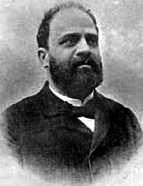

First and foremost are three essays devoted to Creole, sharing a common title - Os dialectos romanicos ou neo-latinos na Africa, Asia e America (Romanic or Neo-Latin Dialects in Africa, Asia and America, 1880, 1882 and 1886). They are truly comparatist works, rich in materials from Portuguese-based creoles, but also Spanish and French-based creoles, as well as lingua franca. Despite deriving from data collected by others, such as those of other major Creolists of that time, such as Hugo Schuchardt, these studies constitute one of Coelho's greatest works. A central issue of Creolistics is the origin of Creole languages, and there are two conflicting theories: one, proposed by Lucien Adam (1883), explains Creole as a substrate of the mother tongue, which remained in adult slaves upon learning the language of their masters; these slaves substantially retained the grammar of the language of their nation, which added to the lexicon of the dominant language of European contact, making Creole a hybrid language. Another theory attributes Creole to children born into slavery who, deprived of the language of their enslaved parents, created a new language from their innate language faculty, capturing the lexicon of the masters’ language. This second theory was formulated by Adolfo Coelho (and seconded by W. Meyer-Lübke, H. Schuchardt and most modern Creolists) on the following principles: 1. Creoles 'represent the first or early stages in the acquisition of a foreign language by a population who speak or spoke another' and 2. 'they owe their origins to the action of psychological or physiological laws that are the same everywhere, and not to the influence of the former languages of the populations who speak these dialects." (Os dialectos romanicos ou neo-latinos na Africa, Asia e America, 1880, p. 102-5). A Creole, by virtue of this, is a language, and not a dialect or variety of another language; it is autonomous both in relation to the native language of the ancestors of its speakers, and in relation to the colonial language of the owners of these ancestors; in appropriate political and cultural conditions, it can develop and reach the stage of a language of culture, with written literature and able to be taught in a classroom setting.
Another important work is the treatise entitled Os Ciganos em Portugal (Gypsies in Portugal, 1892), in which the wealth of historical, ethnographic and anthropological materials is surpassed only by its linguistic data, as it provides a very thorough study of the formation and structure of calão (slang or jargon from the Roma community).
